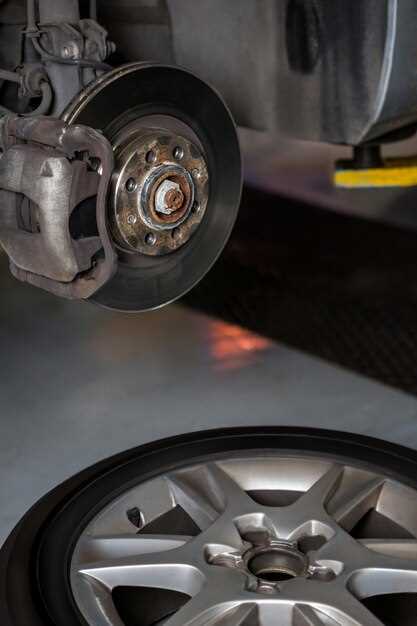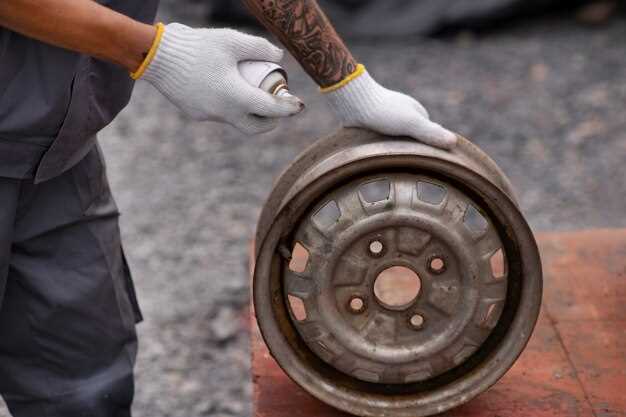
When it comes to enhancing the performance and safety of your daily driver, the braking system often takes a backseat in terms of upgrades. However, effective brakes are crucial for ensuring a smooth and secure driving experience, especially in urban environments where stopping frequently is the norm. Fortunately, improving your vehicle’s braking capabilities doesn’t have to break the bank. There are several affordable upgrades that can significantly enhance your stopping power without requiring a hefty investment.
This article will explore five budget-friendly brake upgrades that can help transform your daily driving experience. These enhancements are not only cost-effective but also easy to install, making them accessible for car enthusiasts and everyday drivers alike. From upgraded brake pads to more efficient brake fluids, each option offers distinct advantages while being mindful of your budget.
Whether you’re seeking improved performance under heavy braking, an increase in overall responsiveness, or simply a quieter and more comfortable ride, there’s an upgrade on this list that will meet your needs. Let’s dive into these five affordable brake upgrades that can make a noticeable difference in your vehicle’s performance and safety.
Choosing the Right Brake Pads for Enhanced Stopping Power

When it comes to improving your vehicle’s braking performance, selecting the appropriate brake pads is crucial. The right brake pads can significantly enhance stopping power, responsiveness, and overall safety while driving. Here are key factors to consider when making your choice.
Material Composition: Brake pads are typically made from three primary materials: organic, semi-metallic, and ceramic. Organic pads offer quiet operation and gentle wear on rotors but may not provide the best performance under high stress. Semi-metallic pads deliver excellent stopping power and durability, making them a popular choice for daily drivers. Ceramic pads, while quieter and less abrasive, tend to excel in producing less dust and providing consistent performance across a range of temperatures.
Performance and Heat Handling: For enhanced stopping power, look for pads that are specifically designed for high performance. These pads usually have advanced formulations that resist brake fade–loss of braking efficiency due to heat buildup. Consider pads that are rated for higher temperatures, as they will perform better during aggressive driving or when carrying heavy loads.
Noise Level and Comfort: One important aspect to consider is the noise level produced during braking. Higher-performance pads can create more noise, but many manufacturers design quieter versions. Opt for pads with noise-dampening features or shims to minimize sound without sacrificing performance.
Dust Production: Brake dust can be a nuisance, leading to dirty wheels and requiring frequent cleaning. If you prefer low-dust options, ceramic brake pads are generally the best choice, as they produce less debris compared to their semi-metallic counterparts.
Compatibility with Vehicle: Always ensure that the brake pads you select are compatible with your specific vehicle make and model. Consult your owner’s manual or contact a knowledgeable professional to confirm that you’re choosing pads that will fit properly and match your driving needs.
Brand and Reviews: Investing in reputable brands can save you time and money in the long run. Research customer reviews and ratings to gauge the performance of specific brake pads. Communities and forums dedicated to automotive enthusiasts are also great resources for firsthand insights and recommendations.
In conclusion, selecting the right brake pads is an essential step toward improving your vehicle’s stopping power and safety. By considering material composition, performance characteristics, noise levels, dust production, compatibility, and brand reputation, you can make an informed decision that suits your driving style and expectations.
How to Upgrade Brake Rotors for Improved Heat Dissipation
Improving heat dissipation in your vehicle’s braking system can significantly enhance performance and longevity. Upgrading brake rotors is one of the most effective ways to achieve this goal. Here’s how to go about it.
1. Choose the Right Type of Rotors: There are several types of rotors that offer superior heat dissipation. Consider opting for vented rotors, which have internal vanes that facilitate airflow, allowing heat to escape. Alternatively, slotted rotors feature grooves that help channel air and gases away from the braking surface.
2. Material Selection: The material of the rotor plays a crucial role in heat management. Look for rotors made from carbon composite or high-carbon iron. These materials exhibit better thermal conductivity, which helps dissipate heat more effectively compared to traditional cast iron rotors.
3. Proper Installation: Ensure your new rotors are installed correctly. This involves cleaning the hub surface to prevent any debris from affecting the rotor’s surface, which can lead to uneven wear and poor heat dissipation. Always follow manufacturer guidelines during installation.
4. Break-In Process: After installation, it is crucial to properly bed your new rotors. Engage in a series of controlled stops from moderate speeds to heat the rotors uniformly, allowing brake pad material to transfer properly onto the rotor surface. This process enhances the performance of the brake system and improves thermal dynamics.
5. Regular Maintenance: To maintain optimal heat dissipation, regularly inspect your rotors for signs of wear, warping, or cracking. Keeping the rotors clean and free from deposits will ensure they operate effectively at all times.
By following these steps and selecting quality components, you can enhance your vehicle’s braking performance significantly, making everyday driving safer and more enjoyable.
Installing Stainless Steel Brake Lines for Better Pressure Response

Upgrading to stainless steel brake lines is one of the most effective modifications for improving brake performance in daily drivers. Unlike traditional rubber brake lines, stainless steel lines are constructed with a flexible metal outer layer that prevents expansion under pressure. This results in a firmer brake pedal feel and enhanced responsiveness.
One of the key advantages of stainless steel brake lines is their ability to maintain consistent hydraulic pressure. When you press the brake pedal, every ounce of pressure should transfer directly to the brake calipers. Rubber lines can expand slightly, which may result in a spongy brake feel and decreased responsiveness. With stainless steel lines, you can expect a more direct and immediate connection between your foot and the brakes, leading to improved stopping power.
Installation of stainless steel brake lines is generally straightforward and can often be completed using basic tools. Start by lifting your vehicle and securely placing it on jack stands. Next, remove the old rubber brake lines, taking care to catch any brake fluid in a container. Then, carefully install the new stainless steel lines, ensuring that all fittings are tightened appropriately to avoid leaks.
It’s also important to bleed the brake system after installation to eliminate any air bubbles that may have entered during the process. Proper bleeding will further enhance the firm feel of your brake pedal. Overall, the investment in stainless steel brake lines can significantly elevate your driving experience, providing you with greater confidence and control during braking maneuvers.


